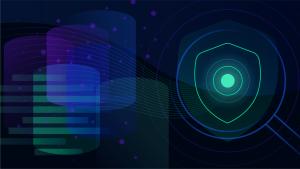Cyberattacks are increasingly becoming the norm. As digital transformation continues to accelerate, software delivery pipelines become more challenging to secure. Indeed, a recent report found that 84% of technology leaders agree that multicloud complexity makes it more difficult to protect applications from security vulnerabilities and attacks. To address this, many states apply for federal funding to build a security operations center to proactively defend against the growing rate of cybersecurity threats and ensure the resilience of digital infrastructure.
While security is crucial to protecting the state’s citizens and the agency’s reputation, leaders are often tasked with improving security while cutting costs. As a result, they may fail to consider the importance of full-stack observability, dashboards, AI-driven automation, application security, and other factors when designing their security operations strategy.
What is a security operations center?
A security operations center plays a crucial role in protecting a state agency by focusing on threat detection, analysis, and response. Security operations center operators are typically security professionals and analysts who work closely with staff in IT operations and development roles.
Threat detection requires full-stack observability
Traditional perimeter defenses against missed and zero-day vulnerabilities often lack precision as they require manual configuration. At the same time, they are unable to protect against evolving types of attacks. In today’s hybrid cloud ecosystems, reliably detecting malicious activity requires full-stack visibility.
Full-stack observability is the ability to determine the state of every endpoint in a distributed IT environment based on its telemetry data. Observability across the full technology stack provides comprehensive, real-time insight into the behavior, performance, and health of applications and their underlying infrastructure.
Telemetry data — such as metrics, logs, and traces — gives IT teams crucial context to understand how all entities are connected. This includes not only infrastructure connections but also the relationships and dependencies between containers, microservices, and code at all network layers.
Without appropriate context, the so-called pillars of observability — metrics, logs, and traces — are simply sources of data, not insights. For metrics in particular, important context includes dimensions, relationships to other metrics, and metadata.
Consider the seemingly countless metrics derived from modern container orchestration systems. These are not only numerous but also dynamic. It’s nearly impossible for humans to make sense of these without context. As a result, monitoring and observability solutions must extract and apply the context needed to transform metrics into actionable insights.
Dashboards visualize the current status of your environment
Teams often use multiple tools in separate silos, which means they lack a complete picture of activity. A security operations center needs a tool to effectively visualize a diverse IT ecosystem.
Dynatrace full stack observability automatically discovers and visualizes your entire hybrid cloud environment, in context. Dashboards provide a real-time animated visualization of the problem status of your environment. This enables teams to understand how everything — including relationships and interdependencies — is connected from a single platform.
Threat detection, analysis, and response demands actionable insights
Today’s organizations must go beyond a traditional, correlation-driven approach to identify an event’s underlying causes and effects. To manage this at scale requires causal AI. The Davis® AI engine uses context to quickly identify root causes and prioritize issues according to user and business impact.
Rather than wasting time wading through alert storms from dozens of monitoring tools and interpreting statistics, teams receive proactive, actionable insights. This data enables them to investigate and remediate the most vulnerable threats first, accelerating how quickly they respond to security incidents.
Furthermore, with a single source of truth for root cause analysis, teams can quickly get on the same page about what needs to be done and who’s responsible for it. This reduces finger-pointing and eliminates war rooms, improving collaboration and cross-functional working relationships.
Monitor applications for significant security concerns
Both in-house developers and software purchased by your agency leverage third-party code libraries that contribute to security vulnerabilities. Traditional vulnerability management tools lack the runtime context necessary to accurately measure risk, resulting in an overwhelming number of “critical” vulnerabilities.
With Dynatrace, your teams are continuously monitoring your cloud applications for significant security concerns. To reduce risk, Dynatrace Application Security includes Runtime Application Protection. This capability continuously protects applications by detecting and blocking attacks on application layer vulnerabilities, such as SQL injection, command injection, and JNDI attacks. Agencies can protect against some critical zero-day attack types, including those for Log4Shell, while the vulnerability is in remediation.
On December 9, 2021, the first indicators of the Log4j vulnerability (Log4Shell) began reverberating worldwide. As organizations started learning about Log4Shell from news feeds, blogs, and social media, the Dynatrace security team—and Dynatrace Application Security—kicked into action. With its continuous surveillance of Dynatrace’s own production environments, Dynatrace Application Security enabled the security team to detect the Log4j vulnerabilities in real time and implement immediate remediation at scale. Dynatrace immediately identified Log4Shell and the first attempted attack patterns.
Enhance your security operations with Dynatrace
When designing and building your state security operations center program, you may not have considered the importance of end-to-end observability. You might not also have considered dashboards, transforming data into insights with context, causal AI, and application security working together to speed up detection and analysis for a quicker time to response.
The primary goal of a security operations center is to ensure the security of an organization’s information systems and data. Successful observability is actionable. The Dynatrace unified observability and security platform can expedite threat detection, analysis, and response while optimizing the process to enable staff to improve collaboration.
Discover how agencies can further boost security operations with zero trust in the free ebook: Achieve zero trust with observability.





Looking for answers?
Start a new discussion or ask for help in our Q&A forum.
Go to forum